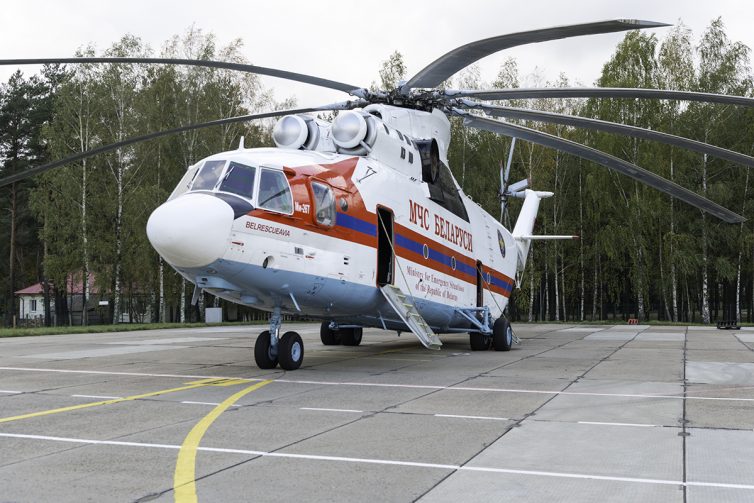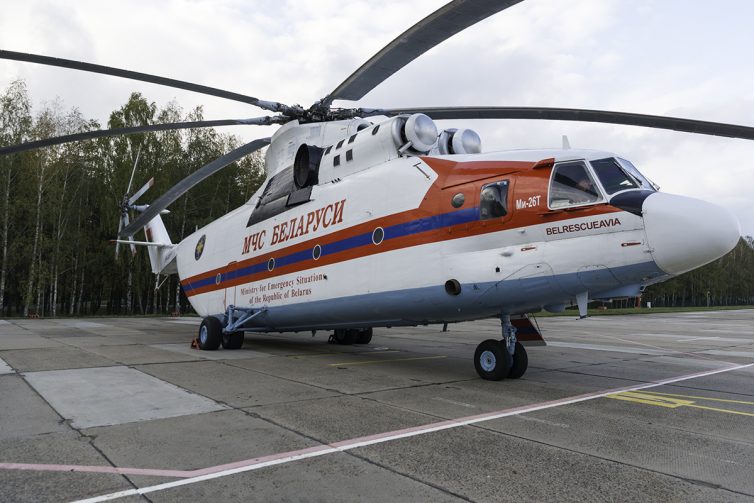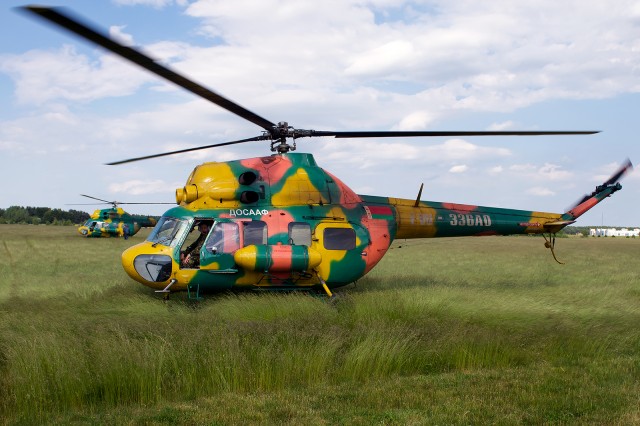
This is an Mi-26T; MChS Belarus uses it for firefighting – Photo: Bernie Leighton | AirlineReporter
Yup, that’s a flying barn. That’s what some pilots refer to it as in Russian. “Ñарай”.
It may have long, flat sides. It may even have a cargo door in the rear large enough to drive a tractor into. Let’s not forget that this is a helicopter. Not just any helicopter, either.

Those are not small trees in the background. It is hard to illustrate how large this thing is. – Photo: Bernie Leighton | AirlineReporter
This is the Mil Mi-26. Specifically an Mi-26T. This one is based at Lipki Airfield on the east side of Minsk, home of a detachment of pilots and other staff who work for the Ministry for Emergency Situations of the Republic of Belarus.

So loud, I am surprised you can’t hear them through the photo. Two DOSAAF of Belarus MI-2 await boarding Photo: Bernie Leighton | AirlineReporter
Russia was built for the helicopter, or so said Mikhail Mil. He would know, even though his cohort Igor Sikorsky beat him to the sky. Russia was also built for the Very Short Take Off and Landing (VSTOL) Biplane. There are many short, rough runways throughout Russia, previously and today, that require special aircraft.
The reason for this combined article about my afternoon with the Belorussian DOSAAF (There’s no translation, but DOSAAF is like if American ROTC units kept old equipment around to show off to civilians) is because the Antonov AN-2 and the Mil MI-2 are probably the two most instrumental and historical aircraft of post-Great Patriotic War aviation.
With scores (over 18,000) of AN-2s built and almost 6000 MI-2s- they were the ubiquitous work horses of the Soviet Union. Even stars of stage and screen!


